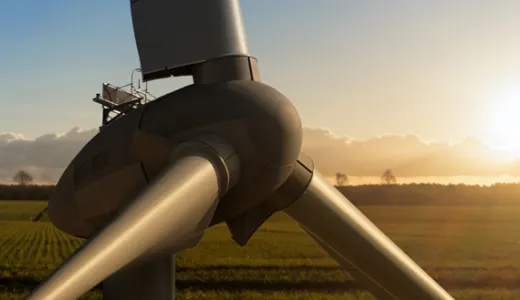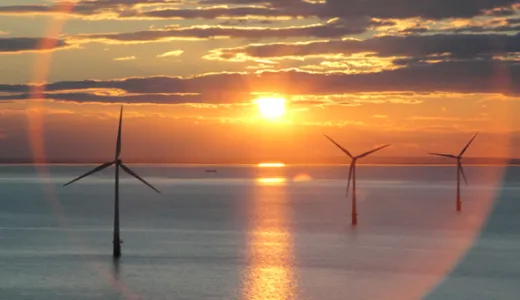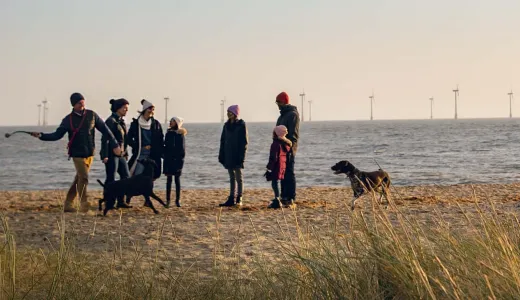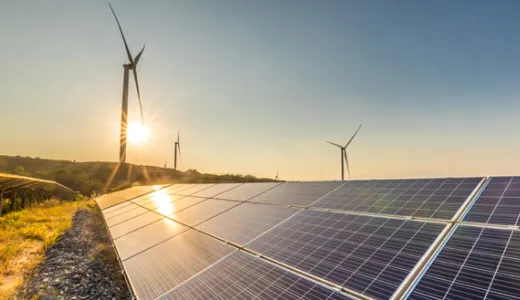Onshore vs offshore wind energy: what’s the difference?
From the wind farms that dot our landscapes to the vast installations off our coastlines, both offshore and onshore wind power play a central role in the transition to a carbon-free electricity system.
The technology that onshore and offshore wind turbines use to generate electricity is essentially the same. Where the two differ is in their position, size, scale and how the electricity they generate is transferred.
What is onshore wind energy?
Simply put, onshore wind energy is the power that’s generated by wind turbines located on land driven by the natural movement of the air. You’ll often see onshore wind farms in fields or more rural areas, as they’re usually constructed in less populated areas where buildings and obstacles don’t interrupt the air.
Onshore wind has been capturing and converting wind power in some form since the 1880s (to make corn or drive pumps), but the opening of the Delabole wind farm in 1991 heralded the commercial era of onshore wind in the UK.
Today there are more than 2,600 operational onshore wind projects in the UK, with a combined capacity of over 15GW.1 Ten new onshore wind projects were installed in 2022, adding 318MW of new capacity – enough to power 209,000 homes. This represents less new UK onshore capacity than was built in 2021, when 370MW was added.2
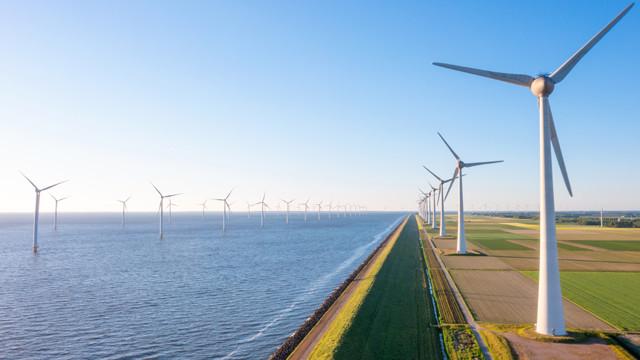
Advantages of onshore wind power
- Reduced environmental impact
An onshore wind farm’s construction and operation creates significantly less emissions than other energy sources, while the sites they’re placed on can still be farmed. - Cost effective
It’s one of the least expensive forms of renewable energy (along with solar PV) and significantly less expensive than offshore wind power. Cheaper infrastructure and costs to run means onshore farms can help lower electricity bills. - Quicker installation and easier maintenance
Onshore wind farms can be constructed in months, at scale and are relatively cheap and cost-effective to maintain compared with offshore.
What is offshore wind energy?
Offshore wind farms generate electricity from wind blowing across the sea. They are considered more efficient than onshore wind farms, thanks to the higher speed of winds, greater consistency and lack of physical interference that land or human-made objects can present.
Advantages of offshore wind power
- Offshore wind turbines are more efficient
Higher wind speeds and consistency in direction means offshore installations require fewer turbines to produce the same amount of energy as onshore wind farms. - Reduced environmental impact
Being miles out from the coast, offshore turbines are further away from the local population. Restricted access to their sites may even help to protect the surrounding marine ecosystems. - More space to construct in
Oceans provide the perfect location to build wind farms in terms of scale and openness. More wind farms being built means more clean, sustainable energy can be produced. - Job creation
The UK Government's ambition is to connect an extra 40GW of offshore wind to the electricity grid by 2030 and expects up to 130,000 jobs to be created through the onshore investment needed to connect these new clean energy supplies.
Full power: the world’s largest wind farm
Once completed, Dogger Bank will be the world’s largest wind farm. Located more than 130km off the North East coast of England, it will have an installed capacity of 3.6GW and will be capable of powering up to 6 million homes annually with sustainably-sourced electricity.
The future of wind energy in the UK
By 2050 the UK will consume more than twice the amount of electricity than today3, driving the need for four times more clean energy generation and double the grid capacity. The UK government has outlined ambitious plans to increase our offshore wind capacity to 50GW by 2030, which would more than triple the current output.
To make this happen, there are a variety of solutions in the pipeline, including:
1. Offshore Hybrid Assets (OHAs)
Instead of individual wind farms connecting one by one to the shore, OHAs (previously known as multi-purpose interconnectors) will allow clusters of offshore wind farms to connect all in one go, plugging into the energy systems of neighbouring countries and making it even easier to share clean energy between countries.
We’re developing a new generation of innovative OHAs that will help to speed up the connection of offshore wind from the North Sea and maximise the use of wind generation. OHAs will also reduce the impact on local communities as they would reduce the amount of connection points and onshore infrastructure required to connect this clean energy to the shore.
2. Floating wind farms
Unlike existing offshore wind farms, these revolutionary ‘floating farms’ don’t need to be fixed to the sea bed, instead using anchors to keep them in place, similar to a boat. This means they can be positioned in much deeper sea areas, meaning there’s more room for bigger turbines that generate larger amounts of power.
3. Energy Islands
Energy Islands will play a part in the evolution of offshore wind infrastructure by acting as state-of-the-art ‘clean energy hubs’. They will enable the connection of offshore wind to multiple countries via OHAs, while also serving as a platform for the production and delivery of green hydrogen.
Last updated: 19 Aug 2024
The information in this article is intended as a factual explainer and does not necessarily reflect National Grid's strategic direction or current business activities.
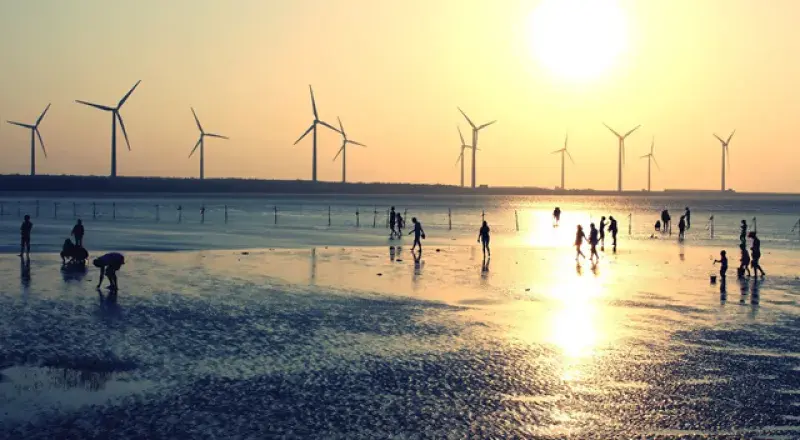
The future of offshore energy
The windiest part of the UK is offshore, out at sea, so putting windfarms out there is the perfect source of renewable energy for us. Find out more about the advances being made in offshore energy and how we'll be using it to generate much more clean energy for a net zero future.
